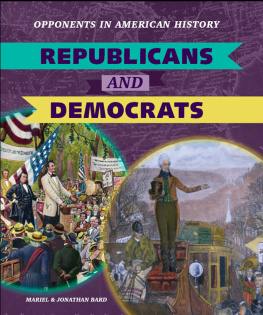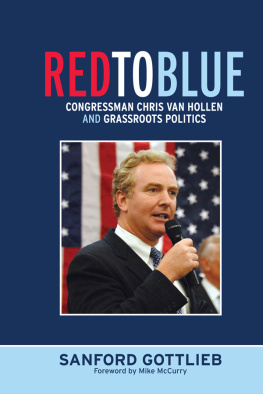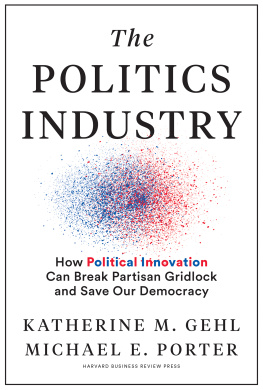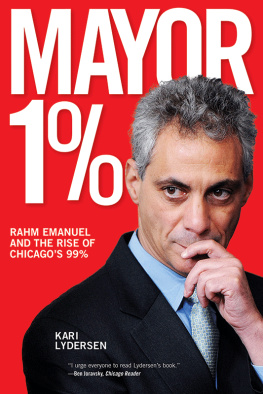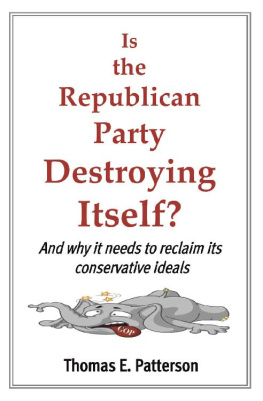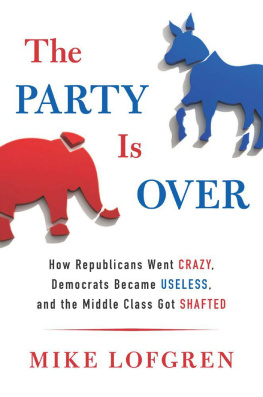
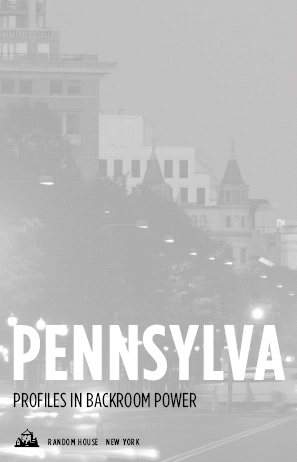
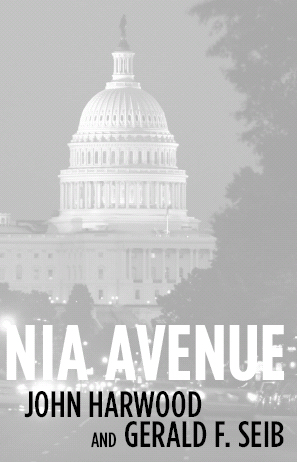
CONTENTS
TO FRANKIE AND BARB
PARTNERS, FRIENDS, COMPANIONS, SOUL MATES
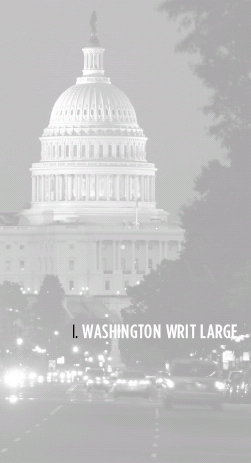
1. GRIDLOCK ON AMERICAS MAIN STREET
PENNSYLVANIA AVENUE, the most celebrated mile of pavement in America, stretches northwest from the U.S. Capitol to the White House, along a path cleared through the Washington swamp two hundred years ago. Every important chapter of American history has played out, in one fashion or another, on Pennsylvania Avenue.
Pennsylvania Avenue is the capitals best address, the street of status, where the powerful work, and meet, and where the ambitious come to get things done. From the days when it was little more than a muddy path, the Avenue has been populated by smart people, men and women full of passion and drive and strong beliefs, many of them well meaning. Over the span of American history, the powerful have come together here to accomplish great thingsto free the oppressed, to win great battles, to launch great public works, to comfort the downtrodden.
The people of Pennsylvania Avenue can be vain, greedy, downright nasty as well. Sometimes the Avenue is where they manage to stop things from getting done. Interspersed with the moments of great glory are those occasions when fear, mistrust, or simple disagreements run out of control to produce confrontation and gridlock on Pennsylvania Avenue.
In recent years, such occasions have become more and more numerous, to the point where, simply put, Pennsylvania Avenue doesnt work very well these days. For a complex set of reasons, it has become an avenue divideddivided by party, ideology, money, technologyso that even the best of intentions these days often produce the worst of results.
To some extent, this complex of forces is well known to those who watch the nations political machinations through the pages of newspapers and magazines or the shouting heads that have come to dominate political talk shows. Whats less well known is the existence of a new kind of power broker on Pennsylvania Avenue, backroom power players who confront these forces and who strive to vault over them and, indeed, sometimes even succeed in doing soin making Washington work.
Many of these people are new to the national scene, having moved into the power structure thanks to the political upheavals of the last two decades. Over that time, the old establishment in Washington has been pushed aside, starting with Ronald Reagans conservative sweep into Washington in 1980, followed by the Bill Clinton years, the Newt Gingrich revolution in the House in 1994, and the Democratic comeback of 2006. The capitals old wiring has been ripped out, and replaced. It is the lot of todays power players to have assumed positions of import at a time when, by all accounts, it has become harder and harder to get things done in the nations capital. Some of these backroom power brokers have mastered the new rules of the road on Pennsylvania Avenue, and perhaps profited from them; others have figured out how to get things done despite Washington gridlock, by breaking away from the traffic patterns that have produced that gridlock.
What all of these powerful people on Pennsylvania Avenue have figured out, amid great conflict along that 1.2-mile stretch of road, is a way to make their voices heard.
This is a book about some of those people on Pennsylvania Avenue, people who are rarely seen, often unknown. Through these profiles in backroom power, we mean to show how a new network operates in Washington today, and by a new set of rules.

But first a story, one that shows some of the changes that have transformed Washington, and some of the forces that have created gridlock on Americas Main Street.
This story unfolded in February 2006, with a furor like that of one of those summer thunderstorms that periodically sweep across the nations capital, seeming to arise out of nowhere, building rapidly to a loud and frightening climax, and then moving out again, leaving Washingtonians to wonder what had hit them. The episode became known simply as the Dubai Ports deal.
The story began quietly enough: A company few in Washington had heard of, with headquarters in a country most Americans never thought about, agreed to a corporate transaction that once might have passed unnoticed. The deal involved the purchase of terminal operations at a handful of American seaports. In the modern global economy, overlaid by new national-security fears and todays instant and shrill political jousting, this particular transaction lit a fire of rebellion and disunity.
A firm called Dubai Ports WorldDP World for shorthad emerged as the winner in a bidding contest to take over a British firm, Peninsular & Oriental Steam Navigation Company, for $6.85 billion. Both companies were in the business of operating the giant oceanside ports that increasingly send and receive the massive shipments of goods that keep the new global economy running.
P&O, a firm with a long and illustrious history in shipping, had long-run shipping terminals at ports around the globe. DP World, in turn, was a company created and owned by the government of Dubai, a tiny Persian Gulf emirate, to do the same thing. Dubai had used some of its billions of dollars in oil money to build a world-class port of its own, and then created DP World to buy and manage other port operations. DP World was run largely by Westerners on the emirates payroll.
What P&O owned, and what DP World coveted, were terminals at some key ports around the globe. Most important, P&O owned port operations in booming China. The fact that DP World would gain access to terminals at six American ports also run by P&O was seen largely as a fortunate by-product.
It was hardly a secret that P&O was selling out; that had been noted in The Wall Street Journal and other newspapers, though in routine stories on inside pages.1 More important, the company approached the U.S. government in mid-October 2005 to inform it that a sale affecting American port operations might be coming.
That, too, was a routine move. Foreign firms attempting a takeover or merger that might affect national security must get a stamp of approval from a little-known group called the Committee on Foreign Investments in the United States, a panel of representatives from across the government run by the Treasury Department from its grand building on Pennsylvania Avenue, next to the White House. CFIUS, as the group is known, has representatives from twelve different Cabinet departments and White House offices. Under its procedures, lower-level career officials in the departments study proposed foreign investments to see whether they pose any security threats. If those officials agree among themselves, a deal is approved. If there are disagreements, a proposed investment deal is kicked upstairs, where higher-level officials, normally political appointees, can take forty-five days for a second investigation, and the decision is ultimately put on the presidents desk.
As it happened, CFIUS had been racked by dissension in the previous year or so. Officials from the Defense Department and other security agencies, who tend to be more sensitive to foreign threats than are their counterparts at the governments financial agencies, felt that their views werent being heard enough in the process. They wanted more scrutiny of deals. Their counterparts at the Treasury and elsewhere, in turn, felt they were under pressure from the White House to decide on deals without pushing them up the line where they would bother higher-level officials and land on the presidents desk. In the months before the DP World deal arrived, the officials running CFIUS had been busy changing their procedures to better ensure that security agencies would have their views heard.
Next page


